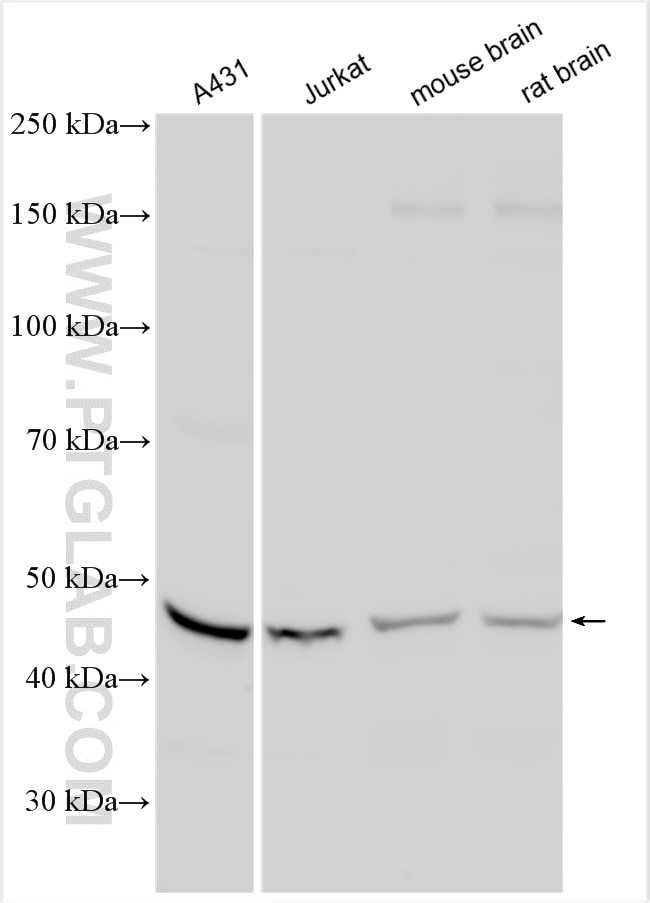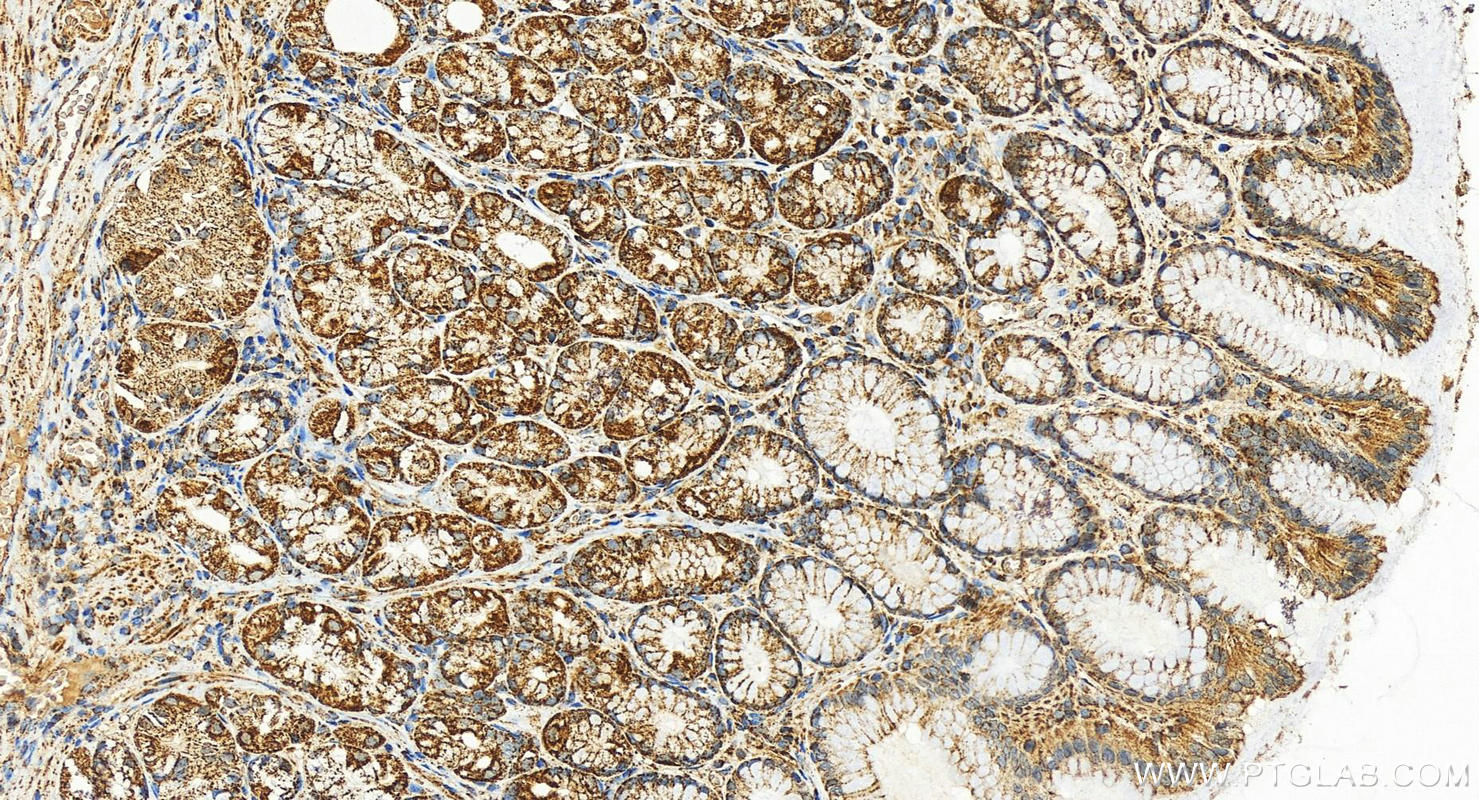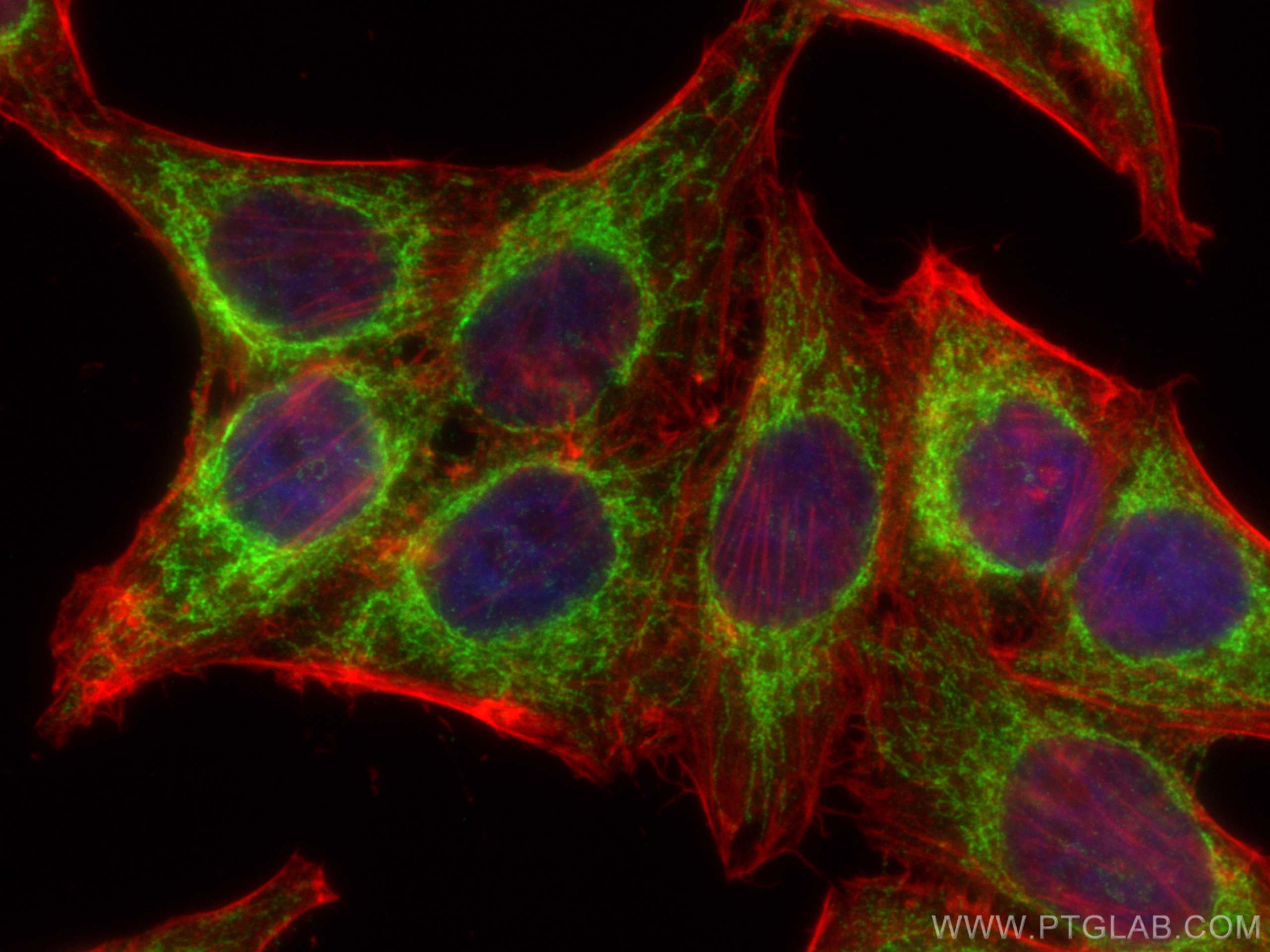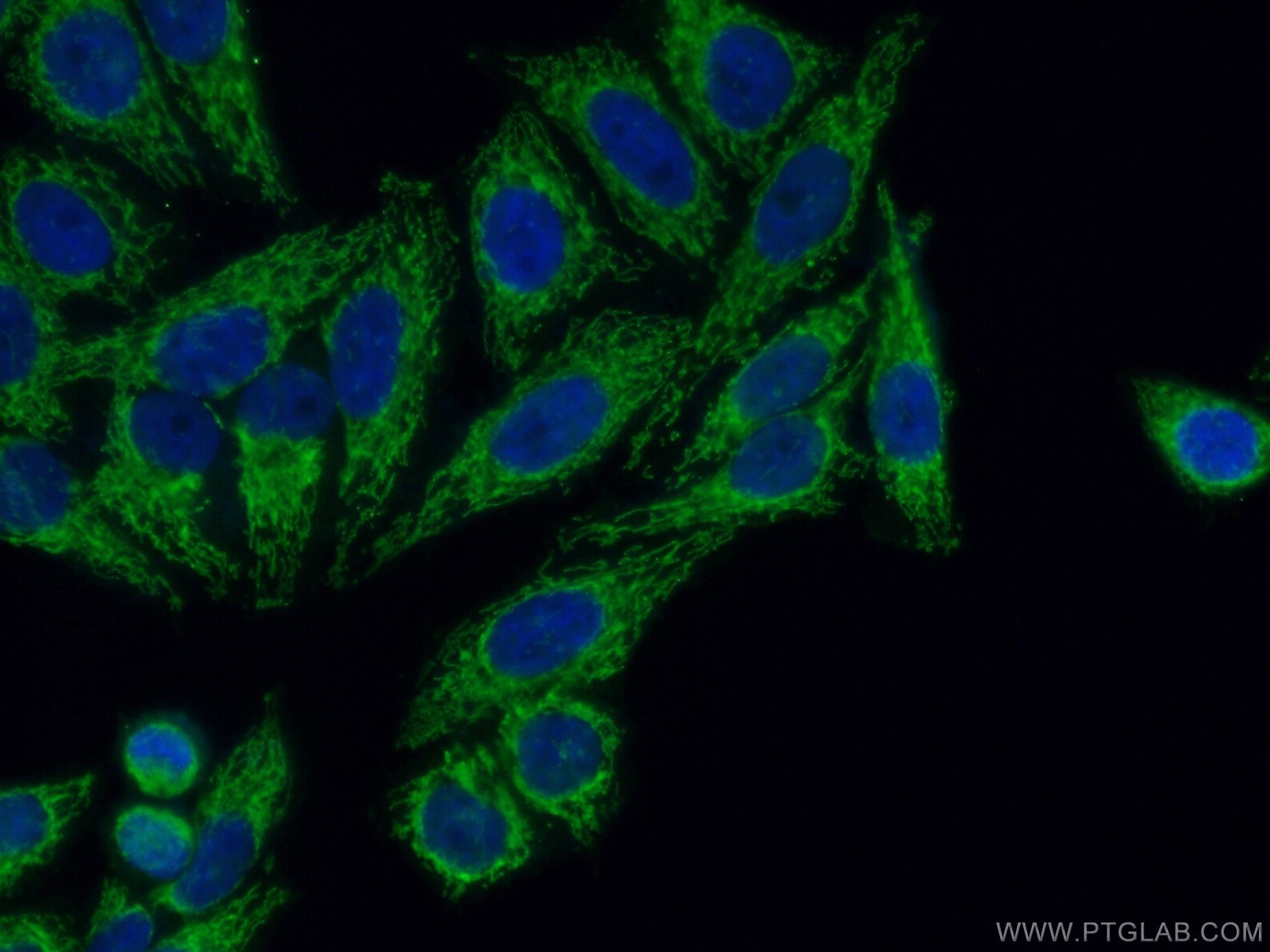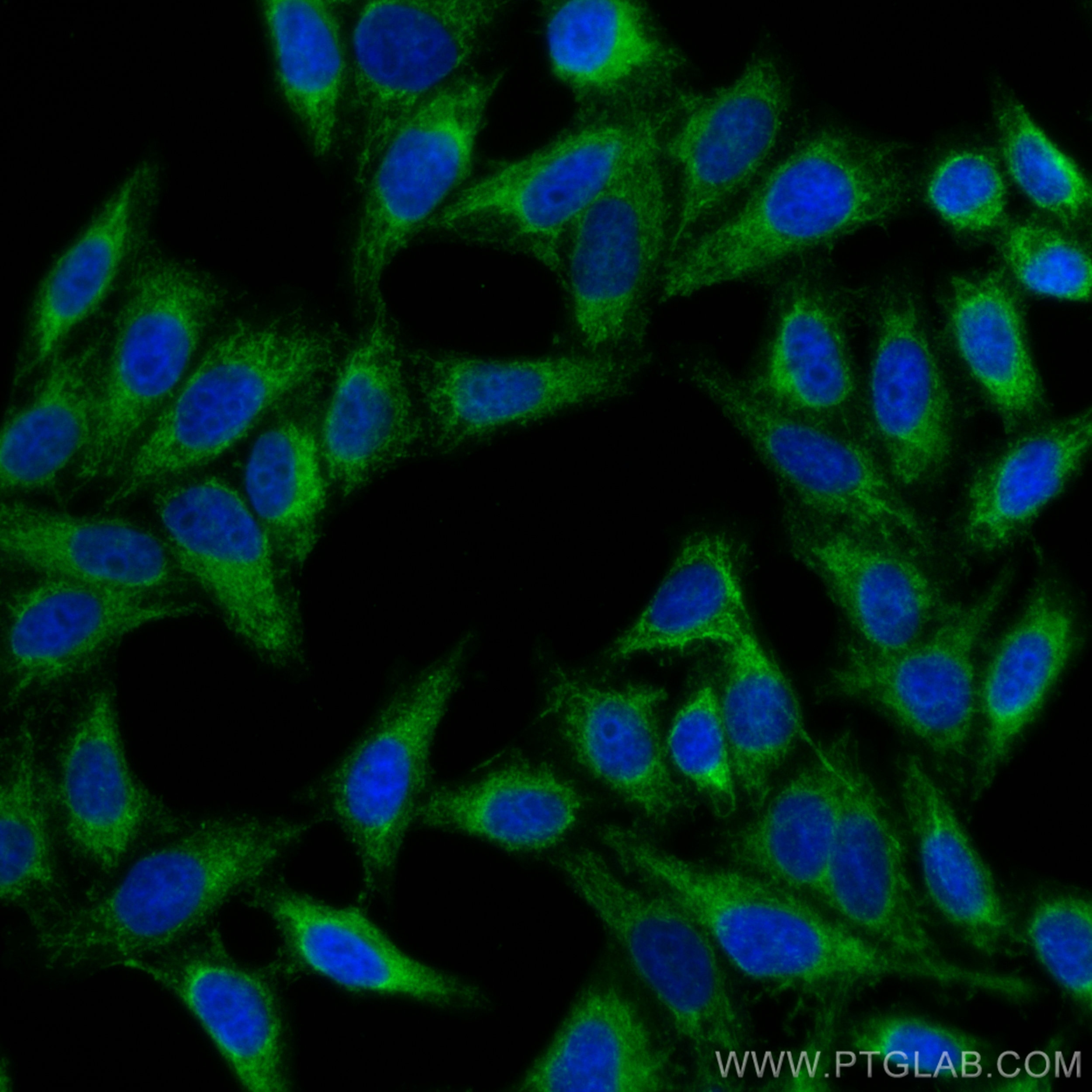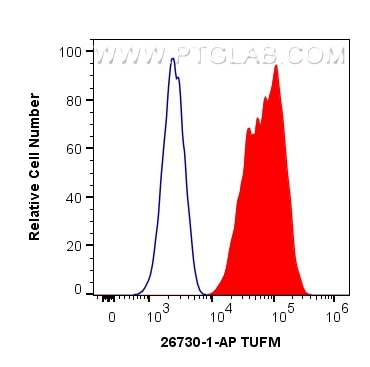Anticorps Polyclonal de lapin anti-TUFM
TUFM Polyclonal Antibody for WB, IHC, IF/ICC, FC (Intra), ELISA
Hôte / Isotype
Lapin / IgG
Réactivité testée
Humain, rat, souris et plus (1)
Applications
WB, IHC, IF/ICC, FC (Intra), CoIP, ELISA
Conjugaison
Non conjugué
N° de cat : 26730-1-AP
Synonymes
Galerie de données de validation
Applications testées
| Résultats positifs en WB | cellules A431, cellules Jurkat, tissu cérébral de rat, tissu cérébral de souris |
| Résultats positifs en IHC | tissu d'estomac humain, il est suggéré de démasquer l'antigène avec un tampon de TE buffer pH 9.0; (*) À défaut, 'le démasquage de l'antigène peut être 'effectué avec un tampon citrate pH 6,0. |
| Résultats positifs en IF/ICC | cellules HepG2, |
| Résultats positifs en FC (Intra) | cellules HepG2, |
Dilution recommandée
| Application | Dilution |
|---|---|
| Western Blot (WB) | WB : 1:1000-1:8000 |
| Immunohistochimie (IHC) | IHC : 1:400-1:1600 |
| Immunofluorescence (IF)/ICC | IF/ICC : 1:500-1:2000 |
| Flow Cytometry (FC) (INTRA) | FC (INTRA) : 0.40 ug per 10^6 cells in a 100 µl suspension |
| It is recommended that this reagent should be titrated in each testing system to obtain optimal results. | |
| Sample-dependent, check data in validation data gallery | |
Applications publiées
| WB | See 8 publications below |
| IF | See 3 publications below |
| CoIP | See 1 publications below |
Informations sur le produit
26730-1-AP cible TUFM dans les applications de WB, IHC, IF/ICC, FC (Intra), CoIP, ELISA et montre une réactivité avec des échantillons Humain, rat, souris
| Réactivité | Humain, rat, souris |
| Réactivité citée | rat, Humain, poisson-zèbre, souris |
| Hôte / Isotype | Lapin / IgG |
| Clonalité | Polyclonal |
| Type | Anticorps |
| Immunogène | TUFM Protéine recombinante Ag24981 |
| Nom complet | Tu translation elongation factor, mitochondrial |
| Masse moléculaire calculée | 50 kDa |
| Poids moléculaire observé | 46-50 kDa |
| Numéro d’acquisition GenBank | BC010041 |
| Symbole du gène | TUFM |
| Identification du gène (NCBI) | 7284 |
| Conjugaison | Non conjugué |
| Forme | Liquide |
| Méthode de purification | Purification par affinité contre l'antigène |
| Tampon de stockage | PBS with 0.02% sodium azide and 50% glycerol |
| Conditions de stockage | Stocker à -20°C. Stable pendant un an après l'expédition. L'aliquotage n'est pas nécessaire pour le stockage à -20oC Les 20ul contiennent 0,1% de BSA. |
Informations générales
TUFM, also named as Elongation factor Tu, mitochondrial, is a 452 amino acid protein, which contains 1 tr-type G (guanine nucleotide-binding) domain and belongs to the TRAFAC class translation factor GTPase superfamily. TUFM localizes in the Mitochondrion and promotes the GTP-dependent binding of aminoacyl-tRNA to the A-site of ribosomes during protein biosynthesis.
Protocole
| Product Specific Protocols | |
|---|---|
| WB protocol for TUFM antibody 26730-1-AP | Download protocol |
| IHC protocol for TUFM antibody 26730-1-AP | Download protocol |
| IF protocol for TUFM antibody 26730-1-AP | Download protocol |
| Standard Protocols | |
|---|---|
| Click here to view our Standard Protocols |
Publications
| Species | Application | Title |
|---|---|---|
Nat Cell Biol Blebbisomes are large, organelle-rich extracellular vesicles with cell-like properties | ||
Nucleic Acids Res Deletion of Mtu1 (Trmu) in zebrafish revealed the essential role of tRNA modification in mitochondrial biogenesis and hearing function. | ||
Nucleic Acids Res Ablation of Mto1 in zebrafish exhibited hypertrophic cardiomyopathy manifested by mitochondrion RNA maturation deficiency. | ||
Sci Total Environ Fluoride impairs mitochondrial translation by targeting miR-221-3p/c-Fos/RMND1 axis contributing to neurodevelopment defects | ||
J Hazard Mater ZLN005 alleviates PBDE-47 induced impairment of mitochondrial translation and neurotoxicity through PGC-1α/ERRα axis | ||
Clin Cancer Res Antitumor Activity of a Mitochondrial-Targeted HSP90 Inhibitor in Gliomas |
